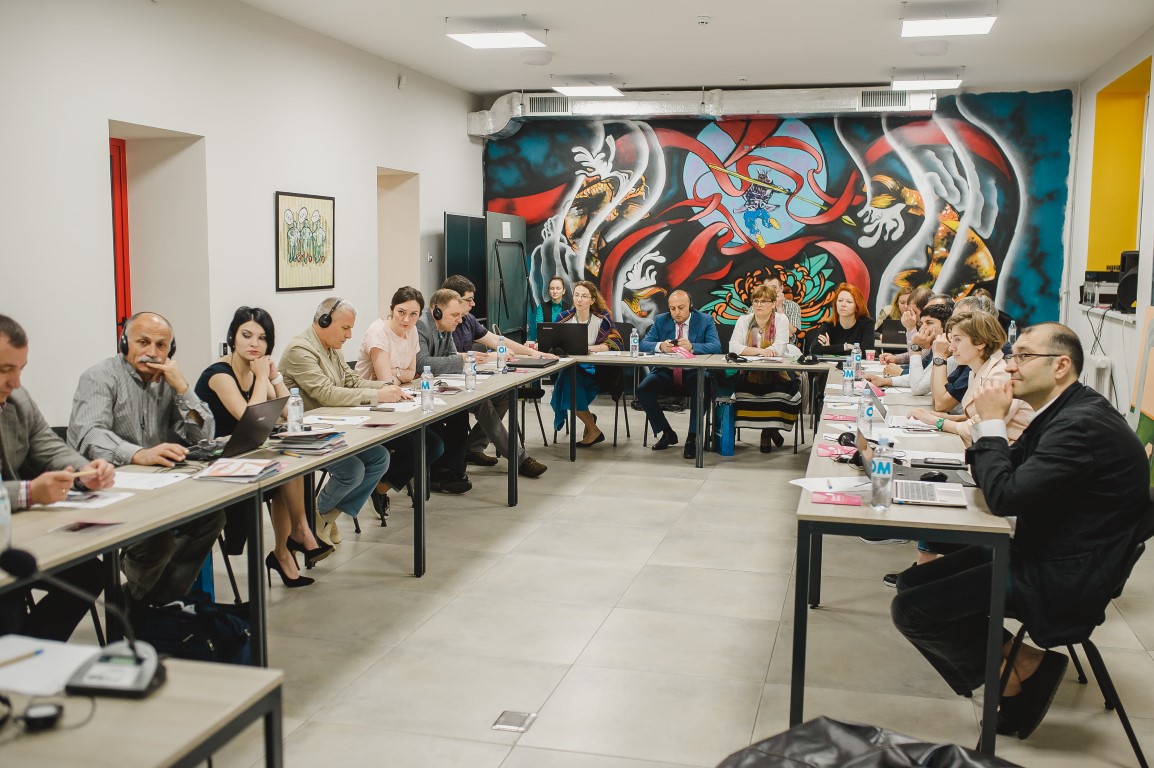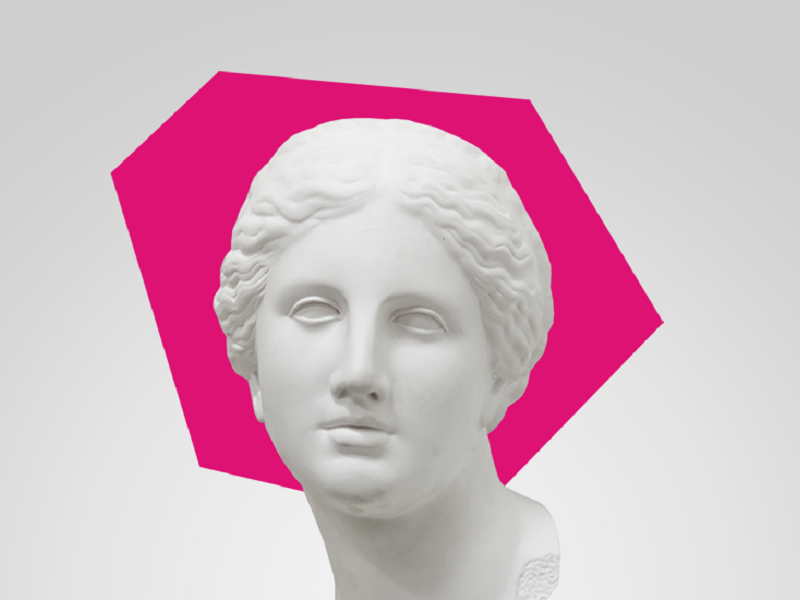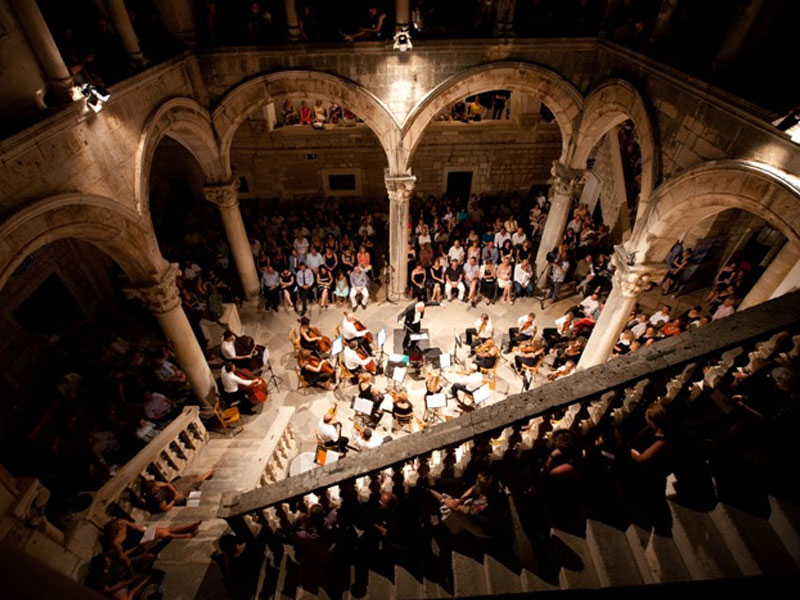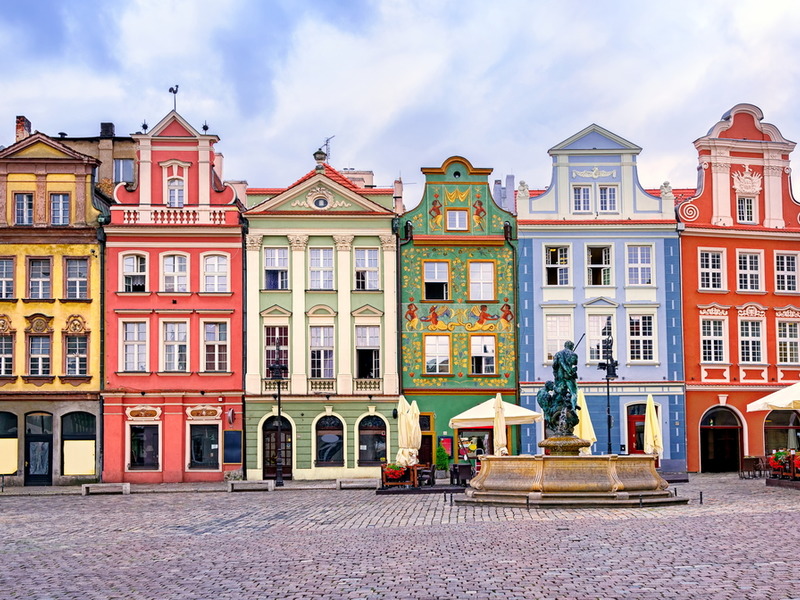
How Can Small Cities Become More Creative: The Example of Six Cities From the Eastern Partnership Countries
On the third day of the National Cultural Forum in Chisinau, the floor was taken by cultural managers who are involved in the creative development of the six cities selected under the EU-Eastern Partnership Culture and Creativity Program. Each of the managers made a presentation of the city or region and the stage they are at in terms of cultural resources mapping.
Sisian, Armenia – the city of ceramics, batik and legend-based performances
With a population of more than 15 000 inhabitants, Sisian is a city in the south of Armenia, 217 kilometres away from Yerevan. This city stands out thanks to its unusual natural landscapes, which attract tourists in the few hotels that can host up to 200 persons each. Sisian has its own ‘Stonehenge’ in Zorats Karer, old XIst-century monasteries and special sites where artists put up theatre performances based on folk legends. Ceramic items are a real feature of the place. Tourists never leave Sisian without having bought a piece of the renowned batiks painted in Armenian motifs. Sisian also has a developed carpet industry. Also, there are many artists doing stone sculptures. Besides, the city also hosts two important festivals – the Bread Festival and the Raspberry Festival.
Artistic education is important for the city. Thus, one can find there municipal schools of music, dance and art, but also private schools of art. The Culture Centre, the Art Gallery, the library and the theatre make up the entire artistic picture of the city.
It is typical of the local artists to try out new things. According to Armenian experts – ‘the city is ready for even more creativity’. The challenges that cultural managers face are determined by type of collaboration between the professionals in the field – who often slip into competing against each other. The experts also argue that artists need to develop their skills more, while to take the most out of the town – the region needs a better infrastructure.
Svietlahorsk, Belarus – the bright city where there is no hotel
As many as 220 km away from the capital city, its population is a little bit more than 69 000 inhabitants. Despite its name, there is no mountain around them town, but people living there speak of it as a place full of light. Created in 1961, this is the youngest town of Belarus, but has gone through a lot in its history. During the 1990s, the number of persons with drug addiction and HIV was reaching alarming figures, but the authorities managed to settle these issues by conducting many awareness-raising campaigns. Nevertheless, the reputation of this city used to be associated with those years. Therefore, the main challenge of culture workers was to draw attention onto cultural and creative initiatives that started to appear.
Svietlahorsk is a city of the young and of green areas. People living in the city love it and would like to stay there to continue to make it develop, since it has a huge potential. There is space for extreme sports, the city has its own ‘Big Ben’ in a large square in the centre of the city where people use to go out for walks. That’s where many cultural activities take place in the museums, art galleries that hide many vestiges of the past, such as collections of soviet posters, illustrations with messages typical of those times or pages from soviet magazines. Urban art is developing so that one can find there even the ‘house of the great Gatsby’, that is if we take into consideration the outside paintings on it.
Unfortunately, the city does not have any hotel at all, nor a bigger café, with many places that used to serve as venues for various activities during soviet times just wait to be tapped into. Local experts also say there is a demand of the city in theatre festivals.
Shamkir, Azerbaijan – the region of intellectual games and chess
The population living in the region goes beyond 200 000 inhabitants, with 42 000 living in the main city. Besides historical vestiges, the region is also interesting thanks to the mixture of Azeri and German cultures, as the city was colonised by Germans in early XIXth century, but then occupied by Russians a little bit later. During World War Two, a big number of Germans was deported to the USSR, but German culture remained alive.
The city is proud to have a modern centre for the young, created thanks to private investments. That is where various intellectual activities take place, like the ‘What? When? Where’ contest, the chess school is there too. The centre has an electronic library, a room for debates and a gallery where young artists exhibit their works. In fact, chess is a popular activity, as an important international tournament takes place there. Local experts believe, however, that this game could be developed from a number of creative perspectives.
There is also a Lutheran church in Shemkir. It has a one-of-a-kind concept. That is where they plan to organize a festival of organ music.
Experts also say that the greatest challenge for the city is to repatriate German nationals and to keep them in the city, since the existing resources offer development opportunities.
Mtskheta-Mtianeti, Georgia – from the Cheese Festival to the International Electronic Music Festival
Mtskheta, which was during ancient times the capital of Georgia, is the main city of the 5 cities in the region. This region in the east of Georgia has impressive landscapes, monastic holdings and cathedrals, with a population of almost 95 000 people. The importance of the historic monuments is what determined UNESCO grant the city of Mtskheta the status of protected place in 1994. The Kazbegi Mountains, alongside other archaeological sites, attract many tourists to the region.
The cities in the region, among which Mtskheta, Kazbegi, Khevsureti, Tianeti and Dusheti host cultural activities in theatres, schools of music, handicraft workshops, libraries, markets, parks, museums. Many festivals are organised there, such as the Folk Festival, the Cheese Festival, the International Electronic Music Festival.
Georgian experts state that tourism is flourishing in the region, however, it needs other types of activities too. They mentioned among the identified issues the lack of communication between cultural managers, lack of professionals in project writing, lack of common visions that the entire community would share. The advantage is that investors show real interest in supporting various cultural initiatives.
Kosiv, Ukraine – the city where the Hutsuls Fashion Festival takes place
Kosiv is a picturesque city at the heart of the Carpathian Mountains where more than 15 000 people live. This is a place of living traditions, and the reason for that is that about 300 handmade artists live there. There are 10 museums and several independent collectors, 5 creative spaces and one of the greats markets of handmade items too.
Specialised schools are attended by 500 art students in total, who conduct various creative activities. Unique festivals take place there, such as the Hutsuls Fashion Festival, which is typical of the place.
According to local experts, the city is full of resources, but they are poorly coordinated. Cultural managers work more by themselves and do not collaborate to join their activities. Another challenge is to establish a balance between tradition and innovation, as well as to develop activities to be conducted during the cold time of the year too. The ambition of the city is to become known as an important destination in Ukraine.
Orhei, Moldova – a city abundant in history and traditions
On the bank of Raut River, 48 km away from Chisinau – Orhei is home to almost 34 000 people. From the moment you enter it and until the heart of the city – where every visitor is welcomed by the monument of Vasile Lupu, the guardian angel of the city – Orhei invites one to walk along the narrow streets where one can almost hear history with all its decades-old stories. Orhei is about people too, not only about places. The many initiatives of the young active people in the city turn it into an urban centre with a major potential for the development of culture and creativity sectors.
Orhei has an active youth community that implemented a number of activities in the city by their own will. The young people do a lot in the Orhei Centre for Youth – the nucleus of all creative activities in the city.
According to local experts, retaining the talented young people who do not return to Orhei once they leave to other cities to get an education, creating networking spaces where the inhabitants of the city could communicate and participate in creative activities are the main challenges to address.
Ragnar Siil, expert in the EU-Eastern Partnership Culture and Creativity Program. Each of these cities has its specific issues, but also development opportunities. We are certain that creative industries and culture are not meant only for big cities, for capitals – they can be a useful tool for small and medium-size cities too. To this end, we proposed local experts a methodology. This will be a test for us too, as there is the possibility that many aspects will work differently in each city. One of the reasons behind the selection of these six cities is that they are extremely different form one another – some are bigger, while others are very small, some are more than 2000 years old, while others are a little over 50.
On our visits to these cities we organize trainings, workshops, we meet other people, which is why we hope that all those involved in this process will appreciate it and will take what’s best out of it. At the end, each of these cities will have its own report specifying all its resources, the SWOT analysis and recommendations on how they are to improve the creative sector.
Lia Ghilardi, international expert in creative industries: Having worked for 25 years in this field, I noticed that usually the attention falls on the big cities. Therefore, we tend to believe that that’s the only place where there is creativity. In the recent years, I started working in smaller places too and I realised that cities in the regions can have a number of advantages as compared with capital cities. When we talk about creativity, we actually talk about a process – a process that different fields are involved in. Usually, authorities at central level do not cooperate with those in the regions. On the other hand, the decisions made at central level do not correspond to the needs of a particular region because of poor collaboration, with the Government not always being aware of the challenges that the regions have to cope with. The purpose of this initiative is to find out how to implement efficiently a cultural city development strategy in the regions, so that central authorities understand what the local needs and resources are. This is a process that requires collaboration, identification of resources, understanding the needs, coming into contact with local communities.
***
The article was drawn up in cooperation with the 2015-2018 EU-Eastern Partnership Culture and Creativity Programme – culturepartnership.eu”.




